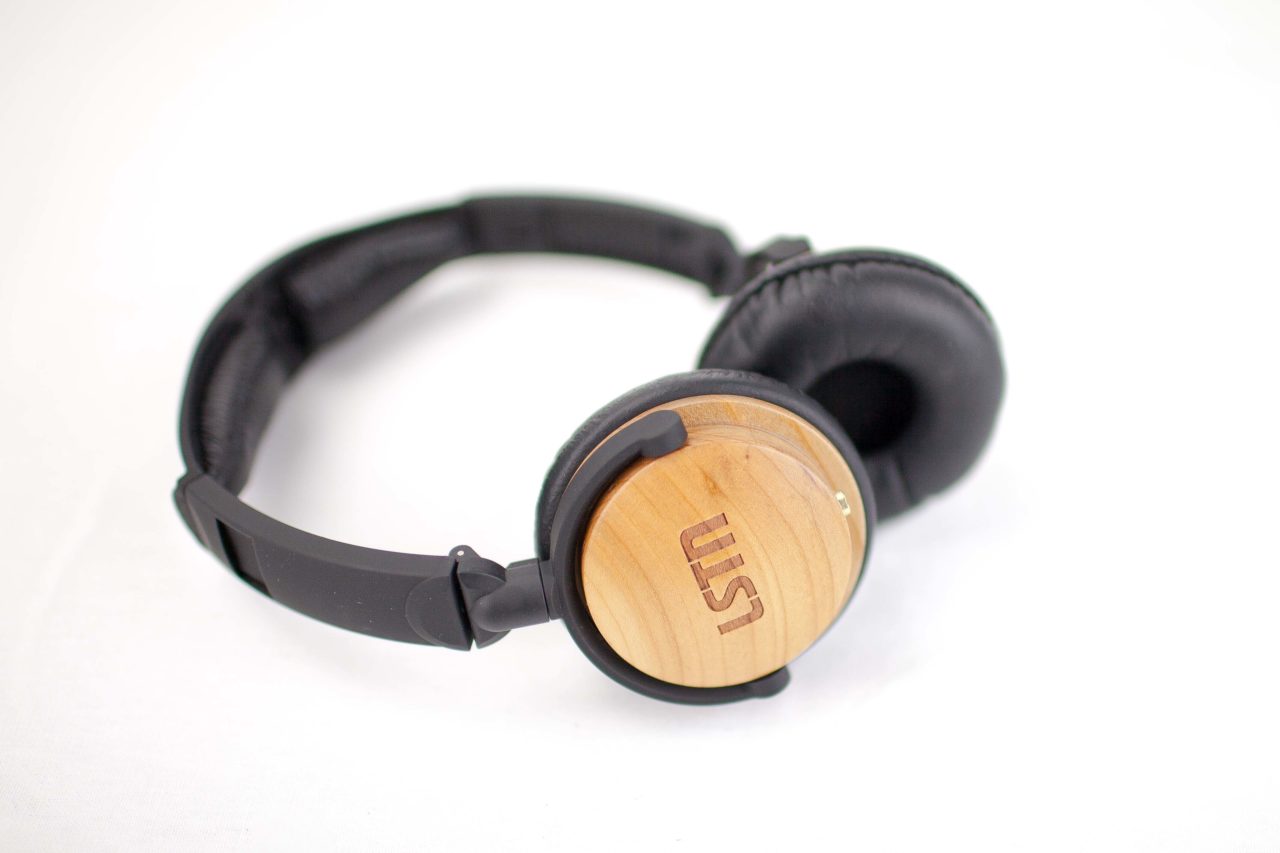The LSTN Fillmores Offer Beautiful Design and Decent Sound

There’s a new wave of startups that aim to combine novel products or services with high-profile charitable missions. Whether it’s eyeglasses or beer, the charitable side of the company gives the founders a chance to make a positive mark in the world alongside a marketing opportunity. One new startup we recently learned of is LSTN (pronounced “Listen”). The LA-based firm makes a series of unique headphones that incorporate handcrafted reclaimed wood, and it has partnered with the Starkey Hearing Foundation to help fund hearing restoration for children around the world.
The company sent us a pair of their Fillmore headphones and we spent the past several weeks putting them through their paces. Here’s why we think they’re easily worth the money.
Packaging & Build Quality
The LSTN Fillmores are the company’s mid-range product, sitting nicely at $100 between the $150 Troubadours and $50 in-ear Bowerys. Like all of LSTN’s headphones, the outer case is handcrafted from reclaimed wood, with options for beech, cherry, and ebony finishes. Our demo pair, pictured in the gallery at the top of this review, is the beech finish.
The headphones come nicely packaged with a box that explains the company’s mission. Accessories include a 1/4-inch plug adapter and a drawstring carrying case, although we found the case to be a bit too small, even when the headphones were contorted into their traveling configuration.
Speaking of traveling configurations, these headphones are flexible. The earpieces have a wide range of rotational and folding motion, and they easily bend to accommodate a variety of positions, both on and off of your head. They can turn to rest flat against a table, half-curl to fit into a narrow space in your bag, and even fold upward to tuck under the headband for compact portability. We were initially a little concerned about how well the plastic parts would hold up with all this twisting and folding, but after nearly three weeks of daily use, there are absolutely no signs of wear and tear.
When you unbox the headphones, one of the first things you’ll first notice about the Fillmores is that they are surprisingly light. The plastic and wood body gives a great airy feeling without the impression of cheapness. They sit very comfortably on the ear, and the elasticity of the headband gives a level of comfort that allows for hours of uninterrupted listening.
The Fillmores include a detachable 1.2 meter cord that connects individually to each earpiece, with a 3.5mm source plug. On the left cord is a handy in-line controller and microphone for use with smartphones and media players. We tested it with an iPhone 5s and the controls worked perfectly: one click to play or pause, two clicks to go to the next track, three click to go to the previous track. Calling was equally smooth. A single click answers a call and, according to the folks on the other end of the line, the voice quality from the microphone was excellent.
The cord itself is great; it’s wrapped with a knit nylon-like coating that helps to prevent tangles and snags, and it feels very high quality, with wood trim on the ends and gold plugs. It’s a huge upgrade from the absurdly frustrating cords that ship with most products, especially the Apple-branded headphones.
Audio Quality
It’s clear that the design and build quality of the Fillmores is pretty good, and the audio quality follows suit. We listened to a variety of lossless sources on an iMac via a USB-connected Cambridge Audio Azur DacMagic Plus, using a 1/4-inch plug adapter.
The Fillmores offer decent bass, and better than average highs, but the mix is just a bit off, to the point that most pop and rock music sounds a tad muddy. After an extended period of listening to the Fillmores, we swapped them back out with our go-to Shure SRH840 headphones and realized just how much of the mids and highs we missed on the Fillmores due to the unbalanced sound. But, to be fair, the Shures cost about double that of the Fillmores.
Despite the less-than-stellar audio quality with rock and pop, other types of content fared much better. Jazz, classical, and folk all sounded quite good, thanks mostly to the fact that you’re less likely to encounter competing lows and highs with these types of sources. Spoken-word content, such as audiobooks and podcasts, also sounded great. While the Fillmores may be overkill just to listen to podcasts, their lightweight and comfortable design, coupled with the in-line microphone, make them a great alternative for wearing while working or doing chores around the house, especially for those who dislike in-ear headphones.
Overall, the Fillmore sound quality is nice and warm, making them very easy to listen to, even if they lack the “wow” factor of perfectly balanced lows and highs offered by higher-end headphones. These aren’t the best headphones we’ve ever tried but, for $100, we really can’t expect them to be. For the price, however, we can easily recommend them as a smart upgrade for users looking for better sound with their mobile devices.
Conclusions
When you step back from the pure audio quality and look at the overall package, the Fillmores are very compelling. The attractive design, good build quality, comfortable fit, decent sound, and the charitable mission of the manufacturer make the Fillmores a good buy at $100. The unique look and feel of the natural wood will turn heads, and the convenience of the in-line controls and microphone is a great bonus that you won’t find on many on- or over-the-ear headphones on the market today.
You shouldn’t expect to be blown away by the Fillmores, but after spending a few weeks putting them through their paces, we don’t think that many will regret the purchase. The Fillmores are available direct from LSTN and a variety of retail partners today. Those who like the concept of handcrafted wood-lined headphones can also check out the over-the-ear Troubadors and in-ear Bowerys.
















